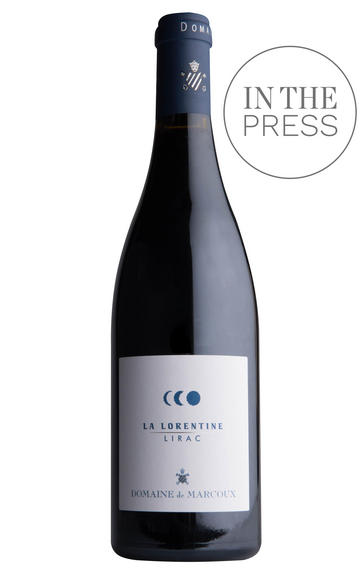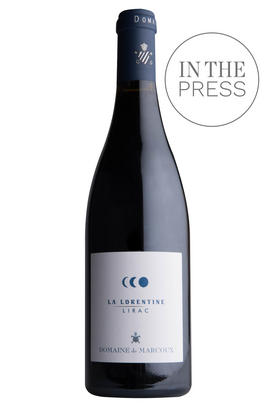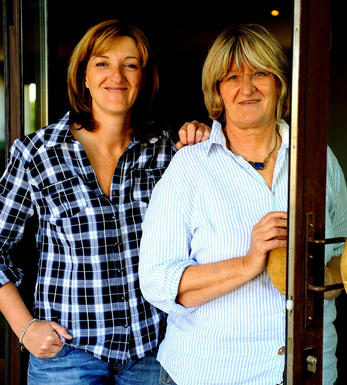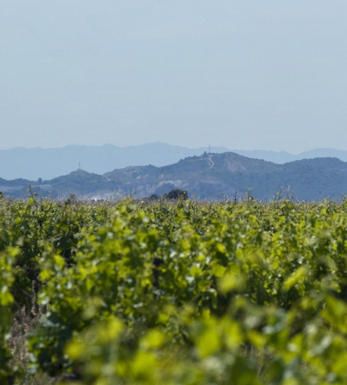
2020 Lirac, La Lorentine, Domaine de Marcoux, Rhône

Critics reviews
40% Mourvèdre, 40% Syrah, 20% Grenache.
Crunchy dark-red/black fruit. Juicy, plenty of precision here. Really nice aftertaste on the palate of dark fruits with a mineral thread. Oak very restrained. Exceeds my expectation of Lirac. Full. Fleshy but also lots of refinement here.
Drink 2022 - 2026
Andy Howard MW, JancisRobinson.com (March 2022)
The 2020 Lirac, which is a mix of Grenache, Syrah, and Mourvèdre, is slightly deeper-hued and has medium-bodied aromas and flavours of blackberries, black raspberries, ground pepper, and violets. It shows plenty of Syrah’s character in a balanced, elegant package. It’s worth pointing out that they’ve planted more Grenache for this cuvée, so expect the blend to shift towards that variety in the future, which I think is a good thing.
Jeb Dunnuck, JebDunnuck.com (November 2021)
About this WINE

Domaine de Marcoux
Sisters Sophie and Catherine Armenier have elevated Marcoux to the very highest ranks. Today, Sophie diligently runs the winery, while her son Vincent Estevenin looks after the vineyards. Now, there are 27 hectares split into over 20 parcels: 18 hectares lie right in the heart of the prime Châteauneuf-du-Pape terroir of La Crau plateau. The remainder rest in Lirac and the other Côtes du Rhône villages. Certified as organic by Ecocert as early as 1991, this year marks four decades of rigorous organic and then biodynamic principles.
The domaine makes three main wines: a Lirac, their main Châteauneuf-du-Pape and an exceptional Châteauneuf-du-Pape Vieilles Vignes – the top cuvée from this organically certified domaine. It’s made from two parcels of outstanding, old-vine Grenache: Charbonnières, planted in 2000 and Esqueirons, planted in 1949.
The cool, freshness of the 2021 vintage really plays to Domaine de Marcoux’s stylistic strengths of purity and minerality, aided as ever by their dedication to biodynamics. Their wines are always balanced but, at 1.5% abv lower than in 2020, both the Lirac and the Châteauneuf-du-Pape are especially gorgeous this year. These wines epitomise the crunchy, deliciously fresh appeal of 2021; they are lifted, fruit-forward and fragrant, and such a delight to drink.

Lirac
A short hop across the river Rhône from Châteauneuf-du-Pape, Lirac was traditionally best-known for its rosés, but increasingly its approachable, full-bodied reds are taking centre stage. Less Grenache-dominated than its neighbours, the current trend for Lirac is towards a greater proportion of Syrah and Mourvèdre, which gives the wines a pleasing firmness and a rich, silky spiciness. The wines can normally be enjoyed from two years’ ageing, up to 10 in some cases.
Lirac’s full, fragrant, food-friendly whites are surprisingly good, containing a minimum of one-third Clairette with the rest made up from Bourbolenc, Grenache Blanc and up to 25 percent each (but no more than 30 percent in total) of Marsanne, Roussanne, Viognier, Ugni Blanc and Picpoul. They are best enjoyed in their youth but can last for up to five years.
Rosé production is declining here, which is a shame as the rosés are good value with a lovely, dry, full-bodied summer fruit palate that is zingier than either neighbouring Tavel (which they resemble) or Provence.

Grenache/Garnacha
Grenache (Noir) is widely grown and comes in a variety of styles. Believed to originate in Spain, it was, in the late 20th century, the most widely planted black grape variety in the world. Today it hovers around seventh in the pecking order. It tends to produce very fruity, rich wines that can range quite widely in their level of tannin.
In many regions – most famously the Southern Rhône, where it complements Syrah and Mourvèdre, among other grapes – it adds backbone and colour to blends, but some of the most notable Châteauneuf du Pape producers (such as Château Rayas) make 100 percent Grenache wines. The grape is a component in many wines of the Languedoc (where you’ll also find its lighter-coloured forms, Grenache Gris and Blanc) and is responsible for much southern French rosé – taking the lead in most Provence styles.
Found all over Spain as Garnacha Tinta (spelt Garnaxa in Catalonia), the grape variety is increasingly detailed on wine labels there. Along with Tempranillo, it forms the majority of the blend for Rioja’s reds and has been adopted widely in Navarra, where it produces lighter styles of red and rosado (rosé). It can also be found operating under a pseudonym, Cannonau, in Sardinia.
Beyond Europe, Grenache is widely planted in California and Australia, largely thanks to its ability to operate in high temperatures and without much water. Particularly in the Barossa Valley, there are some extraordinary dry-farmed bush vines, some of which are centuries old and produce wines of startling intensity.


Buying options
Add to wishlist
Description
Turbo-charged, rustic, châteauneuf-wannabe southern red rhône, with masses of enticing rich, beefy, herby fruit.
Jane MacQuitty, The Times (November 2023)
This wonderfully appealing, organic Lirac has a fine nose of sweet, ripe raspberries and blackberries. It is enticing, juicy and pure; with a real sense of freshness to the aromas. The fruit is mouth-wateringly succulent, accompanied by a mineral freshness. Expect a top note of cinnamon, nutmeg and ginger spice – followed by a pure finish.
Drink decanted from 2022 to 2030
Catriona Felstead MW, Senior Buyer, Berry Bros. & Rudd (March 2022)
wine at a glance
Delivery and quality guarantee